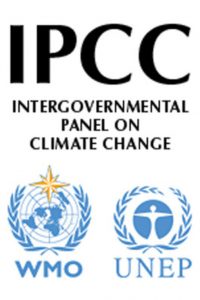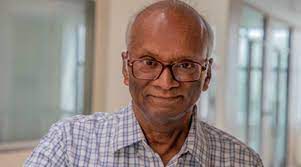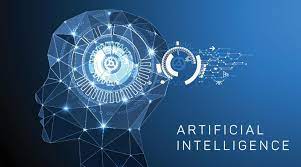Today Current Affairs: 8th March 2022 for UPSC IAS exams, State PSC exams, SSC CGL, State SSC, RRB, Railways, Banking Exam & IBPS, etc
Table of Contents
What Are Humanitarian Corridors?

The United Nations considers humanitarian corridors to be one of several possible forms of a temporary pause of armed conflict.
- They are demilitarized zones, in a specific area and for a specific time — and both sides of an armed conflict agree to them.
- Via these corridors, either food and medical aid can be brought to areas of conflict, or civilians can be evacuated.
- The corridors are necessary when cities are under siege and the population is cut off from basic food supplies, electricity and water.
- In cases where a humanitarian catastrophe unfolds because the international law of war is being violated — for example through large-scale bombing of civilian targets — humanitarian corridors can provide crucial relief.
- In most cases, humanitarian corridors are negotiated by the United Nations. Sometimes they’re also set up by local groups.
- Since all sides need to agree to set up the corridors, there is a risk of military or political abuse. For example, the corridors can be used to smuggle weapons and fuel into besieged cities.
- On the other hand, they can also be used by UN observers, NGOs and journalists to gain access to contested areas where war crimes are being committed.
Density Of Tigers In Sunderban:

Preliminary findings of a study by the Wildlife Institute of India (WII) suggest that the density of tigers in the Sunderbans may have reached the carrying capacity of the mangrove forests, leading to frequent dispersals and a surge in human-wildlife conflict.
- Availability of food and space is the primary factor that determines how many tigers a forest can hold. And often, food is space for the tiger.
- In the Terai and Shivalik hills habitat — think Corbett tiger reserve, for example — 10-16 tigers can survive in 100 sq km.
- This slides to 7-11 tigers per 100 sq km in the reserves of north-central Western Ghats such as Bandipur, and to 6-10 tigers per 100 sq km in the dry deciduous forests, such as Kanha, of central India.
- The correlation between prey availability and tiger density is fairly established.
- There is even a simple linear regression explaining the relationship in the 2018 All-India Tiger report that put the carrying capacity in the Sunderbans “at around 4 tigers” per 100 sq km.
- A joint Indo-Bangla study in 2015 pegged the tiger density at 2.85 per 100 sq km after surveying eight blocks spanning 2,913 sq km across the international borders in the Sunderbans.
- The ongoing WII study indicates a density of 3-5 tigers in the Sunderbans. Given that 88 (86-90) tigers were estimated in 2,313 sq km of the Sundarbans in 2018, the population has been close to its so-called saturation point in the mangrove delta for some time.
FATF Retains Pakistan In Grey List:

The Financial Action Task Force (FATF) has retained Pakistan on its ‘greylist’ or ‘increased monitoring list’. The FATF included the United Arab Emirates (UAE), with which India signed a free trade agreement in February 2021.
- There are 17 countries on the grey list of the FATF.
- Zimbabwe has been excluded from the list after a review found it compliant on all parameters.
- FATF decided against existing Pakistan from the category despite the country meeting 32 out of 34 action points.
- It noted that Pakistan had completed 26 of the 27 action items in its 2018 action plan of the FATF and of the seven action items of the 2021 action plan of the FATF’s Asia Pacific Group on Money Laundering (APG).
- In response to additional deficiencies later identified in Pakistan’s 2019 APG Mutual Evaluation Report in June 2021, Pakistan provided further high-level commitment to address these strategic deficiencies pursuant to a new action plan that primarily focuses on combating money laundering.
- The country had two concurrent action plans with a total of 34 action points, of which 30 had either been fully or largely addressed to curb money laundering and terror financing.
- The FATF encouraged Pakistan to continue making progress to address, as soon as possible, the one remaining item by continuing to demonstrate that terror financing investigations and prosecutions target senior leaders and commanders of UN-designated terrorist groups.
- Since June 2018 – when Pakistan made a high-level political commitment to work with the FATF and APG to strengthen its anti-money laundering/combating the financing of terrorism (AML/CFT) regime and to address its strategic counter–terrorist financing–related deficiencies — its continued political commitment had led to significant progress across a comprehensive CFT action plan.
Background: - The FATF had issued the 27-point action plan after placing Pakistan on the ‘Grey List’ in June 2018. The action plan pertains to curbing money laundering and terror financing.
- Pakistan was first put on the list in 2008, removed in 2009 and then again remained under increased monitoring from 2012 to 2015.
- Pakistan’s inclusion in the grey list has adversely impacted that country’s prospects of obtaining financial assistance from world bodies such as the International Monetary Fund, World Bank, and Asia Development Bank.
Great Barrier Reef Is In crisis : IPCC

A report published by the Intergovernmental Panel on Climate Change (IPCC) states that the Great Barrier Reef is in crisis and suffering grave impacts from climate change.
- The report points to three previous mass bleaching events from 2016 to 2020 that caused significant coral loss, and warns that there has been “mass mortality” of some coral species.
- Great Barrier Reef, world’s largest coral reef complex, located in the Pacific Ocean off northeastern Australia.
Findings of the Report:
- Warming ocean temperature is causing frequent and severe coral bleaching.
- The worst bleaching event, in 2016, affected over 90% of the reef, and a punishing succession of bleaching incidents has left the northern and middle portion of the reef system in a highly degraded state.
- Even if the global community achieves its goal of limiting future warming to 1.5 degrees Celsius since pre-industrial times, that still wouldn’t be sufficient to prevent more frequent mass bleaching events, though it may reduce their occurrence.
- The ocean warming and marine heatwaves will cause the loss and degradation of tropical shallow coral reefs, leading to “widespread destruction” of coral reef ecosystems.
- If bleaching persists, the IPCC estimates 10,000 jobs and AUD1 billion in revenue would be lost every year from declines in tourism alone.
- Around a billion people worldwide rely on coral reefs for their everyday living, which is why a failure to urgently reduce greenhouse gas emissions could have devastating effects for humanity.
- Beyond the reef, climate change will lead to a surge in heat-related deaths in Australia, the extinction of certain animal species, and more wildfires.
- Koalas are at risk of local extinctions due to increasing drought and rising temperatures.
- And rising sea levels and storm surges led to the recent extinction of a rodent species called Bramble Cay melomys, which lived on a remote cay in the northern Great Barrier Reef.
- Black Summer fires of late 2019 and early 2020 that killed at least 33 people and destroyed more than 3,000 homes.
- Even Australia’s famed eucalyptus trees, which are naturally resilient to the country’s seasonal fires, may not be able to withstand the ferocity and frequency of the predicted blazes, which could lead to the decimation of forests.
- The report also provides extensive lists of climate adaptation strategies, such as improving building standards so that homes stay cooler during potentially deadly heat waves.
Great Barrier Reef:
- It is the world’s most extensive and spectacular Coral Reef ecosystem composed of over 2,900 individual reefs and 900 islands.
- The reef is located in the Coral Sea (North-East Coast), off the coast of Queensland, Australia.
- It can be seen from outer space and is the world’s biggest single structure made by living organisms.
- This reef structure is composed of and built by billions of tiny organisms, known as coral polyps.
- They are made up of genetically identical organisms called polyps, which are tiny, soft-bodied organisms. At their base is a hard, protective limestone skeleton called a calicle, which forms the structure of coral reefs.
- These polyps have microscopic algae called zooxanthellae living within their tissues. The corals and algae have a mutualistic (symbiotic) relationship.
- It was selected as a World Heritage Site in 1981.
Theyyam: Annual Temple Festival

Kerala Tourism department have started live streaming of an annual temple festival called Theyyam performances, to promote cultural tourism.
- Theyyam is a popular ritual form of dance worship in Kerala and Karnataka, India.
- It consisted of thousand-year-old traditions, rituals and customs.
- The people consider Theyyam itself as a channel to a god and they thus seek blessings from Theyyam.
- Each Theyyam is a man or a woman who attained divine status by performing heroic deeds or by leading a virtuous life
- Most Theyyams are believed to be the incarnations of Shiva or Shakti (the consort of Shiva).
- Or they have strong associations with these principal deities of Hinduism.
- There are over 400 theyyams. Some of these are very important.
What Is a Security Chip In IoT?

Two Indian researchers have built a low-energy security chip that is designed to prevent Side-Channel Attacks (SCAs) on IoT (Internet of Things) devices.
- IoT is a computing concept that describes the idea of everyday physical objects being connected to the internet and being able to identify themselves to other devices.
- It is being used to create smart infrastructure in various verticals such as Power, Automotive, Safety & Surveillance, Remote Health Management, Agriculture, Smart Homes and Smart Cities etc, using connected devices.
- Security Chip means the application specific integrated circuit that instantiates the Security Feature after being embedded in the device.
- A SCA is a security exploit that aims to gather information from or influence the program execution of a system by measuring or exploiting indirect effects of the system or its hardware — rather than targeting the program or its code directly.
- Typically, SCAs aim to extract sensitive information like cryptographic keys, proprietary machine learning models and parameters by measuring things like timing information, power consumption and electromagnetic leaks of a system.
- An SCA may also be referred to as a sidebar attack or an implementation attack.
- It can be applied to any data that you want to keep secret.
- It can be used on your smartwatch to extract your ECG and heart rate signal,”
- Types of SCAs: Timing attack, Electromagnetic (EM) attack, Acoustic, Power, Optical, memory Cache, hardware weaknesses.
- Even though SCAs are difficult to execute on most modern systems, the increasing sophistication of machine learning algorithms, greater computing power of devices and measuring devices with increasing sensitivities are making SCAs more of a reality.
HANSA-NG:

HANSA-NG, a first of its kind, indigenously developed aircraft trainer has completed sea level trials.
- It is developed by the CSIR-National Aerospace Laboratories (CSIR-NAL).
- National Aerospace Laboratories (NAL), a constituent of the Council of Scientific and Industrial Research (CSIR) established in the year 1959 is the only government aerospace Research & Development laboratory in the country’s civilian sector.
- Council of Scientific and Industrial Research (CSIR) is the largest Research and Development (R&D) organisation in India.
- The HANSA-NG, or HANSA-New Generation, is one of the most advanced flying trainers.
- HANSA-NG is an upgraded version of HANSA, which saw the first flight in 1993, and was certified in 2000.
- The Centre approved HANSA-NG in 2018 and NAL retro-modified HANSA-3 aircraft with a glass cockpit and got it certified by DGCA (Directorate General of Civil Aviation). The aircraft was demonstrated at Aero-India 2019.
- It is powered by a Rotax Digital Control Engine and is designed to meet the need for trainer aircraft by flying clubs in India.
- It is an ideal aircraft for Commercial Pilot Licensing (CPL) due to its low cost and low fuel consumption.
General Consent For The CBI: Withdrawn By Meghalaya

Meghalaya has withdrawn consent to the CBI to investigate cases in the state, becoming the ninth state to have taken this step.
- Eight other states which had withdrawn consent to the CBI: Maharashtra, Punjab, Rajasthan, West Bengal, Jharkhand, Chhattisgarh, Kerala, and Mizoram.
- In November last year, the Supreme Court had expressed concern over a submission by the CBI that since 2018, around 150 requests for sanction to investigate had been pending with the eight state governments who had withdrawn general consent until then.
- The CBI is governed by the Delhi Special Police Establishment Act that makes consent of a state government mandatory for conducting investigation in that state.
- There are two kinds of consent:
- Case-specific and general– Given that the CBI has jurisdiction only over central government departments and employees, it can investigate a case involving state government employees or a violent crime in a given state only after that state government gives its consent.
- “General consent” is normally given to help the CBI seamlessly conduct its investigation into cases of corruption against central government employees in the concerned state.
- Withdrawal Simply means that CBI officers will lose all powers of a police officer as soon as they enter the state unless the state government has allowed them.
- The decision means the CBI will now have to get consent from the state government for every case it registers in Meghalaya.
Who Won The Boltzmann Medal 2022?

Deepak Dhar, physicist, from the Indian Institute of Science Education and Research, Pune, has been selected for the Boltzmann medal, awarded by the Commission on Statistical Physics (C3) of the International Union of Pure and Applied Physics.
- He has been chosen for this award for his contributions in the field of statistical physics, including universal long-time relaxation in disordered magnetic systems, exact solutions in percolation and cluster counting problems and definition of spectral dimension of fractals.
- He becomes the first Indian to win this award, which was initiated in 1975, with Nobel laureate (1982) K.G. Wilson being the first recipient.
- He shares the platform with American scientist John J. Hopfield who is known for his invention of an associative neural network, now named after him.
- The award consists of the gilded Boltzmann medal with the inscription of Ludwig Boltzmann, and the chosen two scientists will be presented the medals at the StatPhys28 conference to be held in Tokyo, 7-11 August, 2023.
- The medal, which honours outstanding achievements in the field of statistical physics, has been given to one or two persons, once in three years, in the last 47 years.
- It is given only once to a person and on the condition that that person has not won the Nobel prize so far.
Democracy Report 2022: Important Points

The V-Dem Institute at Sweden’s University of Gothenburg has come out with their annual democracy report. The study is titled ‘Democracy Report 2022: Autocratisation Changing Nature?’.
- The report classifies countries into four regime types based on their score in the Liberal Democratic Index (LDI): Liberal Democracy, Electoral Democracy, Electoral Autocracy, and Closed Autocracy.
- It classifies India as an electoral autocracy ranking it 93rd on the LDI, out of 179 countries.
- The level of democracy enjoyed by the average global citizen in 2021 is down to 1989 levels, with the democratic gains of the post-Cold War period eroding rapidly in the last few years.
- More than twice as many countries (32) are undergoing autocratisation as are witnessing democratisation (15).
- Noting that India is one of the top ten ‘autocratisers’ in the world, the V-Dem (Varieties of Democracy) report classifies India as an autocracy (‘electoral autocracy’) rather than a democracy, ranking it 93rd on the liberal democracy index, out of 179 countries.
- One of the biggest drivers of autocratisation is “toxic polarisation”, a dominant trend in 40 countries, as opposed to 5 countries that showed rising polarisation in 2011.
Artificial Intelligence In eCourt Projects:

During the 2022 Budget session of Parliament, Law Minister Kiren Rijiju said that while implementing Phase 2 of the eCourt projects, under operation since 2015, a need was felt to adopt new, cutting-edge technologies of Machine Learning (ML) and Artificial Intelligence (AI) to increase the efficiency of the justice delivery system.
- To explore the use of AI in judicial domain, the Supreme Court of India has constituted the Artificial Intelligence Committee which has mainly identified application of AI technology in translation of judicial documents, legal research assistance and process automation.
- Several law firms are now keen on trying out new technologies for a quick reference on judicial precedents and pronouncements on cases with similar legal issues at stake.
- The Mumbai-based Riverus, a “legal tech” firm, has developed ML applications that peruse troves of cases, “understand” them, and parse cases that are similar in content — very much like a human expert would do — in a fraction of the time.
Present status in India
- Over the course of the COVID-19 pandemic, the use of technology for e-filing, and virtual hearings has seen a dramatic rise.
- From the beginning of the lockdown in 2020 until January 8 this year, the Supreme Court of India emerged as a global leader by conducting 1,81,909 virtual hearings.
- But the use of ML in India’s legal sphere has so far been restricted to automating back-end work, and is still a very long way from being used as a decision-making tool for the judiciary.
- SUVAS is a language-learning application being used to translate judgments, and SUPACE, which can draft a legal brief, comprise the initiatives being undertaken in the Indian judiciary as a part of incorporating ML-based applications.




